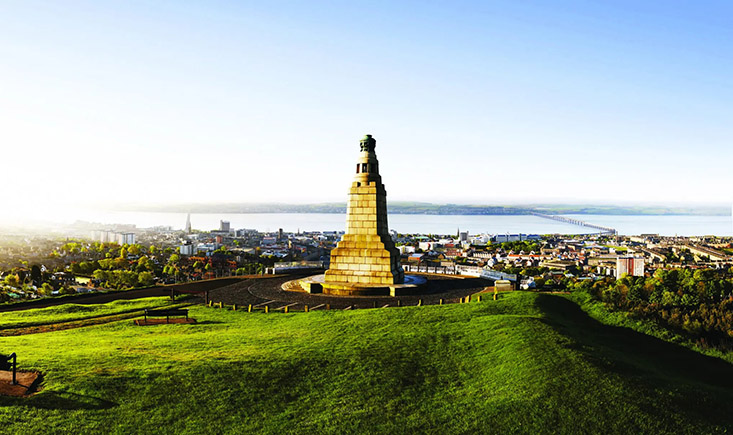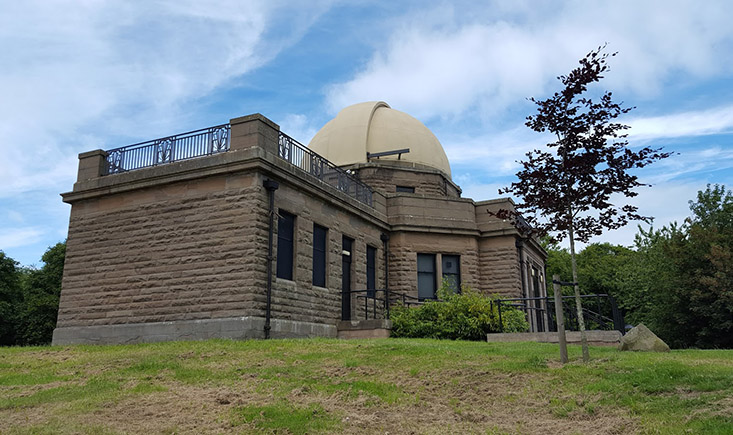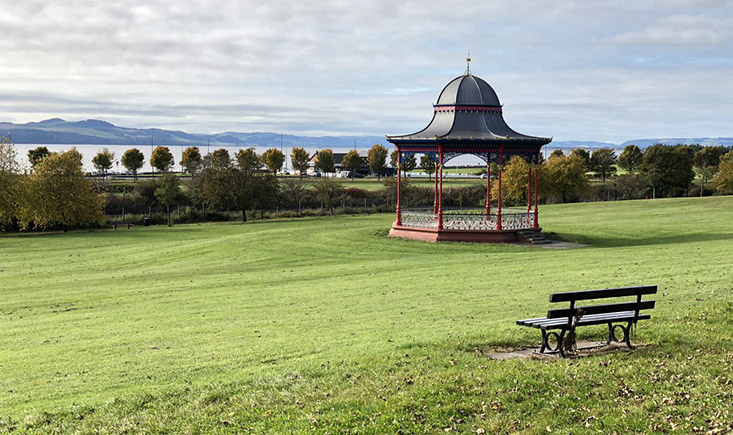
Hiking and Nature: The Best Outdoor Activities in Dundee
Book Tours & Attractions . Destinations . Travel Resources1. Arrival in Dundee: A City Framed by Nature
The morning light over the River Tay shimmered as the train pulled into Dundee Station, casting a silver sheen across the water. Stepping out, the air carried a blend of sea salt and cool earth, a subtle hint of what lay ahead. Dundee’s cityscape rises gently from the estuary, flanked by rolling hills and threaded with winding trails. The first impression is of a place where nature and urban life co-exist in harmony, neither overbearing the other.
The decision to explore Dundee on foot felt instinctive. The city’s size, topography, and abundant green space make it an ideal hub for anyone seeking to blend city culture with outdoor immersion.
2. Dundee Law: The Watchful Hill
The initial ascent began with Dundee Law, the volcanic plug standing sentinel over the city. Though only 572 feet (174 meters) high, it commands a sweeping view across the Tay Estuary, north to the Grampian Mountains and south toward Fife’s gentle hills.
The walk from the city center to the summit is short but steep. Pavement gives way to grassy paths, with stairs carved into the hill’s slope. The scent of wildflowers and bramble rose thick in the air, especially in late spring. Blackbirds called from within the gorse bushes, and a kestrel hovered motionless overhead.
At the summit stands a war memorial, solemn yet proud, looking out over the rooftops and spires. From this vantage, one can trace the line of the Tay Rail Bridge stretching across the estuary, and the distant shimmer of fields beyond.
The descent, taken slowly, offered space to linger in quiet alcoves. Benches faced westward, perfect for watching sunsets cast golden light over the stone buildings below.
3. Balgay Hill and the Observatory

From Dundee Law, the next natural transition was Balgay Park and Hill, accessible via a gentle walk through the residential neighborhoods of the West End. The shift from urban to rural occurs almost imperceptibly. One moment on cobbled streets, the next beneath a canopy of Scots pine and beech.
Balgay Hill is less dramatic in elevation than the Law, but its character is rich with old woodland charm. The path winds like a ribbon, lined with moss and dry leaves. Robins followed along branches, seemingly unafraid of the quiet foot traffic.
Atop the hill is the Mills Observatory, a modest dome housing Scotland’s first purpose-built public observatory. Though known more for stargazing than hiking, the structure gives the park a sense of timelessness. Here, it feels as if modern life recedes, replaced by a slower rhythm defined by the rustle of leaves and the whisper of wind through branches.
4. The Riverside Walk: Steel Meets Sea
With Balgay behind, the walk continued eastward along Riverside Drive. The contrast could not be more striking—this stretch hugs the Tay, its path flanked by the river on one side and sleek modern developments on the other. The air smells of salt and diesel, seaweed and steel.
Cyclists pass in groups, and dog walkers greet with the easy familiarity of locals. The sound of oars slapping water comes from the boathouses, where university rowing teams train beneath the gleam of V&A Dundee’s contemporary façade.
This walk is less about solitude and more about movement, observation, and flow. The sea breeze freshens the senses. Ships rise and fall with the tide. Bridges and clouds stretch toward the horizon.
5. Tentsmuir Forest: Pines and Sand Dunes
A short bus ride from Dundee leads to one of the most magical walking environments in eastern Scotland—Tentsmuir Forest. From Tayport, the entrance is unassuming: a wooden gate, a gravel track, and a sign that mentions deer and red squirrels.
The forest stretches inland and out toward the coast. Pines tower above, standing in silent ranks. The scent is unmistakable—sap, sun-warmed bark, and the clean, mineral tang of nearby sea air. Underfoot, the path is soft with needles. Occasionally, hoofprints mark the passage of roe deer.
Walking eastward, the forest opens to reveal dunes and sandy trails. A boardwalk leads to the beach, where the North Sea rolls in under grey skies. The wind here is strong, and the cries of oystercatchers echo over the surf.
Time seems irrelevant in this space. Walking becomes rhythm. The horizon feels vast, almost abstract. A detour northward reveals pools left by the tide, where seals sometimes bask, blinking up at passersby with curious indifference.
6. Clatto Reservoir: Tranquility in the Highlands’ Shadow
Back toward the city’s edge lies Clatto Reservoir, reached after a steady uphill walk through residential streets. It’s less wild than Tentsmuir, but more intimate. Ducks cut wakes through still water, and fishermen sit quietly on wooden platforms, lines extended like question marks on the surface.
The path loops the reservoir and ventures briefly into pockets of forest. It’s an ideal afternoon circuit—peaceful, reflective. The hills beyond frame the skyline in layers of blue and green, constantly shifting as clouds pass.
Around the north edge of the path, foxgloves grow in thickets. The sound of wind in reeds creates a constant hush. Here, one walks not to be challenged, but to be calmed.
7. Sidlaw Hills: A Highland Prelude
For those willing to venture slightly farther afield, the Sidlaw Hills offer a taste of the Highlands without leaving the region. Craigowl Hill is the tallest in the range and offers a trail that begins near Auchterhouse.
The climb starts gently, then grows steeper, tracing sheep tracks and weather-worn ruts. Grouse explode from the heather, startling the unwary. The grass underfoot is soft, and the sky seems to pull upward.
At the top, the view is unbroken in every direction. To the north, the Cairngorms are faint on the horizon; to the south, the Tay snakes its way toward the sea.
This is where one understands why the Sidlaws inspired painters and poets. The air feels lighter, thinner, scented with earth and lichen. In spring, hares dart between tussocks; in autumn, the bracken burns red under early frosts.
The descent follows a different path, slower and more deliberate. Every footstep reintroduces the lowland—less dramatic, but no less captivating.
8. Magdalen Green: A Pause Along the Way

Returning to Dundee’s heart, the walk continues along the western waterfront, through Magdalen Green. A Victorian bandstand stands in the center, a symbol of leisure from a slower century. Children play here, and the elderly stroll arm in arm.
The path hugs the Tay once more. Swans glide through reflections. The setting sun paints the estuary in soft oranges and pinks. Despite its simplicity, this park serves as a kind of exhale—a breath taken before venturing onward.
9. Backmuir Woods: Ancient Trees and New Growth
Northwest of the city lies Backmuir Woods, a managed forest reserve. The journey there involves a short drive or a long bike ride, but the reward is a labyrinth of woodland trails. Oak, ash, and birch dominate the landscape, mixed with younger growth from recent planting efforts.
The paths weave through dappled light. Butterflies rise from the undergrowth in warm months, and the canopy filters the sunlight into golden coins on the forest floor. Jays call overhead, and the occasional rustle betrays a squirrel’s acrobatic movement.
This is a space of slow wandering. Trails intersect at odd angles. It’s easy—and enjoyable—to become briefly lost.
10. Templeton Woods: The Realm of Red Squirrels
Closer to the city, just past Camperdown Park, lies Templeton Woods. Known primarily for its population of red squirrels, it offers a chance to see one of Scotland’s rarest mammals in its natural habitat. The forest is dense, the trails well-marked, and the atmosphere quiet.
Walking here requires patience. The squirrels often remain unseen until one stops, waits, and listens. Then—just above—a flash of red, a twitch of tail, and a leap from branch to branch.
The experience is more than just spotting wildlife. It’s about entering a rhythm. The forest rewards stillness, observation, and respect.
11. Camperdown Park: Nature Meets History
Adjacent to Templeton Woods is Camperdown Park, one of Dundee’s largest green spaces. The wide boulevards and open lawns contrast with the intimacy of the forest trails. At its center stands Camperdown House, a stately building that adds grandeur to the setting.
The park offers long, straight walks beneath ancient trees, with detours into wilder corners where deer occasionally graze. The pond reflects willow branches and cloudscape. This is a place to wander aimlessly, allowing time and distance to slip away unnoticed.
12. A City Framed by Its Wild Edges
Dundee may not boast the towering peaks of the Highlands or the vast moorlands of the north, but it offers something equally compelling: accessibility to nature woven into the daily fabric of life. Walking here is not an escape—it is a return. Each path, each hill, each woodland or riverside trail offers a chance to re-enter the world in a quieter, more thoughtful way.
The boots wear thin, the legs grow tired, but the rhythm remains. Footsteps echo through pine, across stone, and over sand, writing a story of movement not captured in maps, but in memory. The trail continues, just over the next hill. Always.
You may also like
Recent Posts
- Seaside Delights: Discovering Dundee’s Finest Seafood Restaurants
- A Taste of True Scotland: Discovering Authentic Flavors in Dundee
- Hiking and Nature: The Best Outdoor Activities in Dundee
- A Museum Trail Through Dundee: From V&A to The McManus
- Getting Around Dundee: A Comprehensive Guide to Public Transport, Walking, and Driving

Leave a Reply